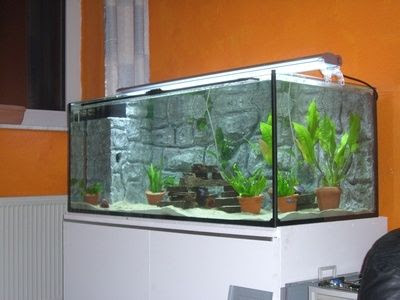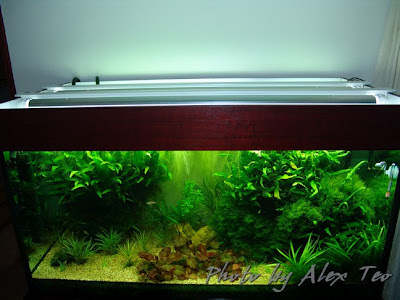All aquariums need some sort of illumination. Lighting in an aquarium increases the view, increasing the details you can see in the container décor as well as in the seafood themselves. When you buy an aquarium, you can opt to select a complete container installation, which will include basic illumination resources. However, buying your illumination installation item by item can provide you much more control over the individual illumination elements, so that you can buy exactly the right illumination for your aquarium and for your seafood.
 |
| Aquarium DIY Lighting |
When it comes to aquarium illumination, your choices rely on the kind of cover you have bought, as it will impact the design of light you'll be able to use. You must also consider the illumination specifications for your seafood as well as any stay vegetation in the container.
Step one is to select lights, which are calculated in h. Most aquariums need about 2-3 h per quart of water, although placed aquariums need a little bit higher mild levels than those with plastic vegetation. Although you may believe that lighter lighting is better, this is not always the case. Many seafood enjoy a more demure environment, and can become burdened out under extreme illumination. Shiny lights can also improve the development of plankton, another great reason not to surpass the suggested electricity for your aquarium.
 |
| Aquarium DIY Lighting |
In a water aquarium, there are two primary types of lighting: incandescent, and neon. Most incandescent lights come by means of screw-in lights, each providing 15 to 25 h of power. Incandescent illumination is known for a yellow-colored shade, and does not simulate sunlight as well as other illumination options. This design of light is most popular for small aquariums because they are affordable and do not release very bright mild. An incandescent light is not adequate for aquariums with stay vegetation.
 |
| Aquarium DIY Lighting |
Fluorescent lighting is more flexible, as they are available in both light and pipe type, and can be used in almost all styles of aquarium hoods. Generally considered a better choice than incandescent lights for aquarium illumination, neon lights release a lighter and white mild. If you have a placed container, you'll need neon lights, since this kind of mild can be utilized by vegetation. 2-3 h per quart should be adequate unless your aquarium is intensely placed.
Standard household neon lights can be used on seafood tanks; there are also specific aquarium lights that offer specific spectrums of mild for different specifications. A "full spectrum" neon mild is perfect for those who want brightly-colored seafood and healthy vegetation, because it offers the greatest range of wavelengths. A mild focused in the green variety will bring out the shades of your exotic seafood, while blue lights usually improve the development of plankton. Orange-red illumination is perfect for growing marine vegetation.
 |
| Aquarium DIY Lighting |
Halide lighting is a third choice for aquarium mild arrangements, although they are usually found only on high-end aquariums. They are known for very bright lights, often thousands of h, and should only be used on very large aquariums. Halide systems are often used on salt water aquariums, which can need up to 8 h per quart, in contrast to the 2-3 h per quart for a water aquarium.
 |
| Aquarium DIY Lighting |
In addition to the primary illumination system, you may also want an feature mild. Completely submersible LED illumination in almost any color possible can be used to feature your vegetation or container décor. These lights allow you to watch your seafood in the black, without disturbing their daily styles.
No matter what kind of mild installation you select for your aquarium, always remember to convert it off in the evening. Fish need a evening, like most other living animals. In fact, many aquarium seafood are night, and will stay in concealing if you forget to convert off their mild. Get into the addiction of switching off the aquarium lights when it gets black, and back on when you get up in the day.








